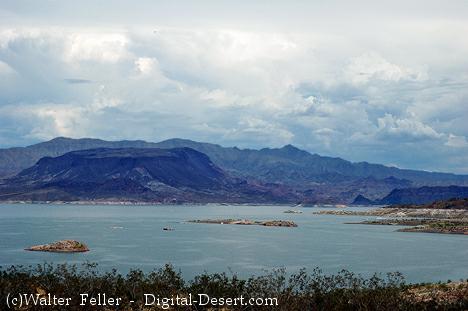Ecology of Hoover Dam
Life in the Desert
A quick glance at the desert might have the appearance of a lifeless environment. Yet, the Mojave Desert is alive with plants, animals, insects, fish and reptiles which have all adapted to the desert climate. The desert environment meets their needs for:
FOOD - Each type of animal will only eat certain foods. Some plants provide more nutritional value than others. Both the quantity and quality of the food are important.
WATER - All wildlife needs water. There are many water sources such as rain, dew, snow and moisture in food.
SHELTER - All wildlife needs cover for protection while feeding, sleeping, playing, traveling, etc. Cover can come in many forms, for example: vegetation, burrows, and rocks.
SPACE - Overcrowding leads to competition among animals looking for food, water, and shelter. For this reason, only a set number of animals can live in an area.
The desert is a delicate land of plant and animal life dependent on each other for their survival. The following pages identify and describe some of the most commonly found plants and animals in the desert area surrounding Hoover Dam.
Previous - NextAlso see:
-
Adaptations
The Mojave Desert is an environment of extreme heat, poor soil nutrients, limited soil water-holding capacity, andóworst of all ...
